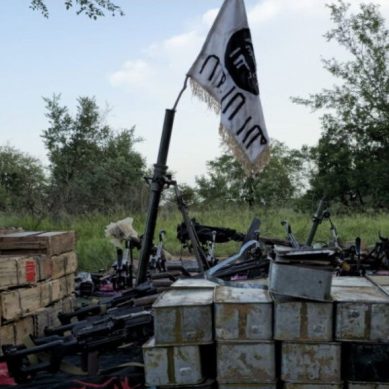
The chairman of the Kakamega Fish Farmers Cooperative Society Limited says rising interest fish production will soon bridge Kenya’s 300,000 tonnes of fish deficit, anchor the country to meeting its proteins needs and even have surplus for export.
The projection comes on the back of a visit last month by Cabinet Secretary for Mining, Blue Economy and Maritime Affairs Hassan Joho, which fish famers have hailed as “consequential” in improving fish production in the county.
Kakamega Chairman of Fish Farmers Cooperative Society Laban Mwanzo says the visit was significant as it came at a time when the county had overtaken traditional fish-producing parts of the country in Lake Victoria Basin and the Kenyan coast as the leader in fish production and supplier of the same to other counties.
Mwanzo appreciated the grant of Ksh188 million ($1.46 million) to aquaculture farmers in Kakamega County, which he said will help them purchase ponds liners and predator kits among other necessities to improve fish farming and production.
Since it was indexed as a key driver of the local economy and as a weapon against poverty and food insecurity in 2021 when interest in aquaculture was limited to 6,700 farmers and production 1,700 metric tonnes of fish, investment has risen rapidly. Currently, it is estimated that Kakamega has 10,000 fish farmers and 12,000 fish ponds that are producing over 2,500 metric tonnes of fish.
Mwanzo, who is also a renowned fish farmer with over 200 fish ponds on his model farm in Malava Sub-County, said the county is on course to producing more tilapia, catfish and ornamental, which are popular with farmers for both food and commerce.
“It was a great day (Joho’s visit) as we are also giving grants to young aquaculture farmers in other sub-counties and this will assist them embrace the trade as white collar job opportunities continue to dwindle in the country and with these grants being put to good use we will improve our production not only for consumption but also in value addition.
He appealed to the youths take up fish farming as it required just a small space for investment.
“Most young people have no land of their own to invest in largescale farming and hence aquaculture is the best way to go as one only requires a 300 square-metres that will house 1000 fingerlings and which will mature after six months, fetching a farmer Ksh.150,000 compared with cane farming that will take up two years on an acre for one to earn that kind of cash (or less). Imagine how much one can make on the same acre if he constructs fish ponds in only six months,” he said.
He advised investors interested in fish farming to visit Labed Cash Marine Enterprise in Malava subcounty to be trained on fish farming and how to produce locally available fish feeds.
“At Labedcash, we have intern students pursuing aquaculture and agriculture, we have trainers to teach new fish farmers and we do produce black soldier flies and Azola as feeds for the fish considering that fish feeds is more expensive for young upcoming farmers, we have the needed experts on the ground and ready to give directions fish variety rearing.”
He encouraged more farmers with readily available water source to consider aquaculture as their next income generating activity and also as a source of nutrition as the demand for white meat grows daily.
- A Tell report / By Isaac Wakhungu Andanje







